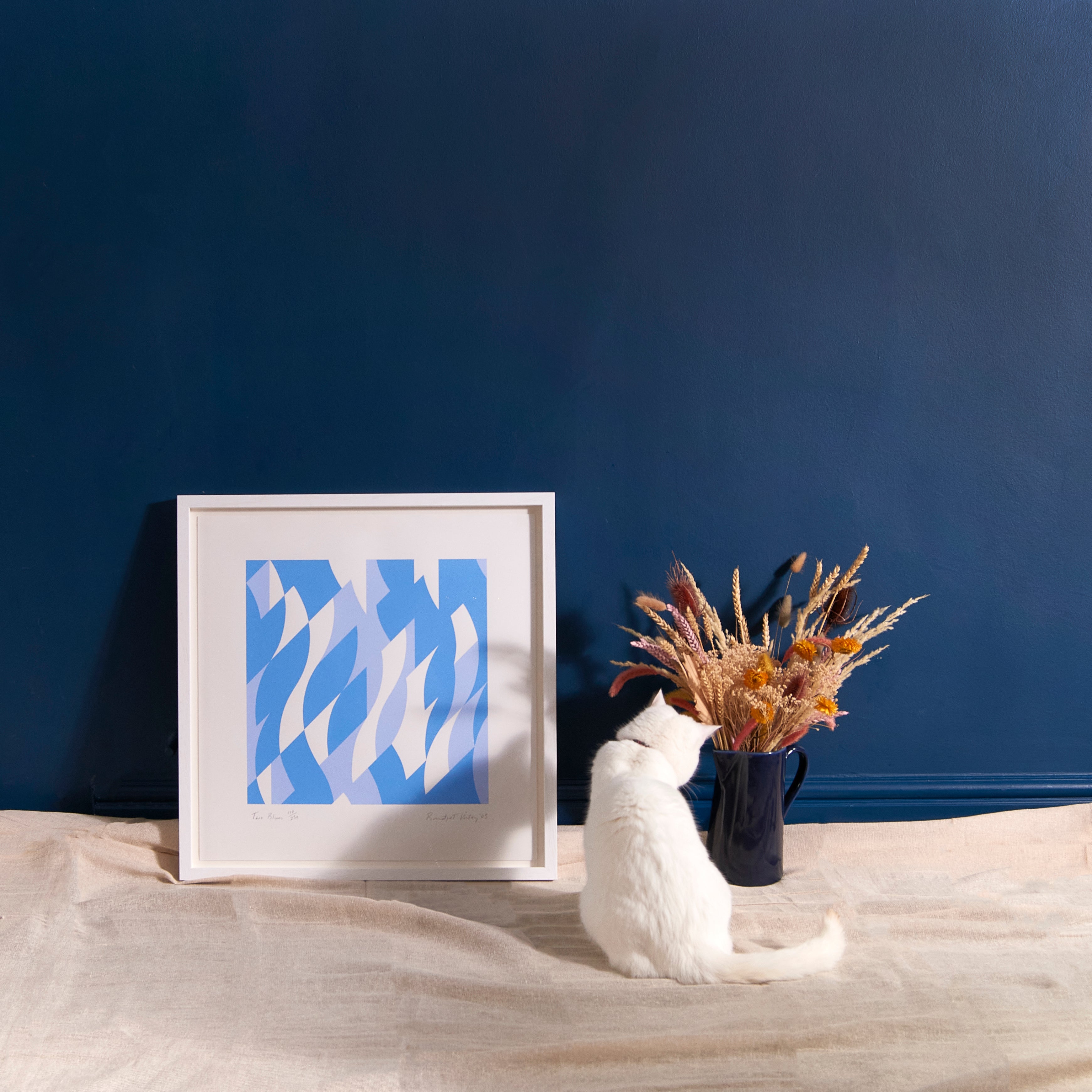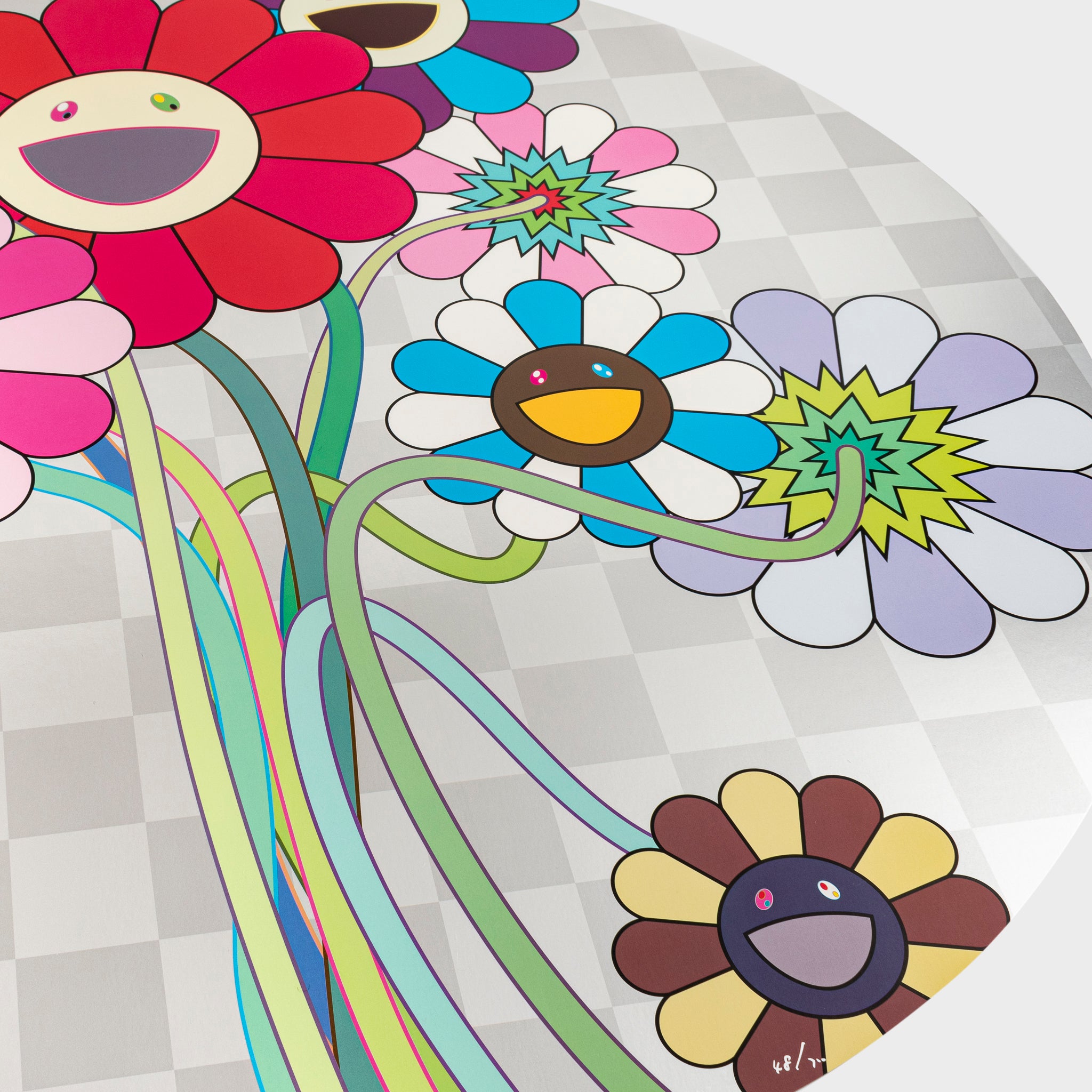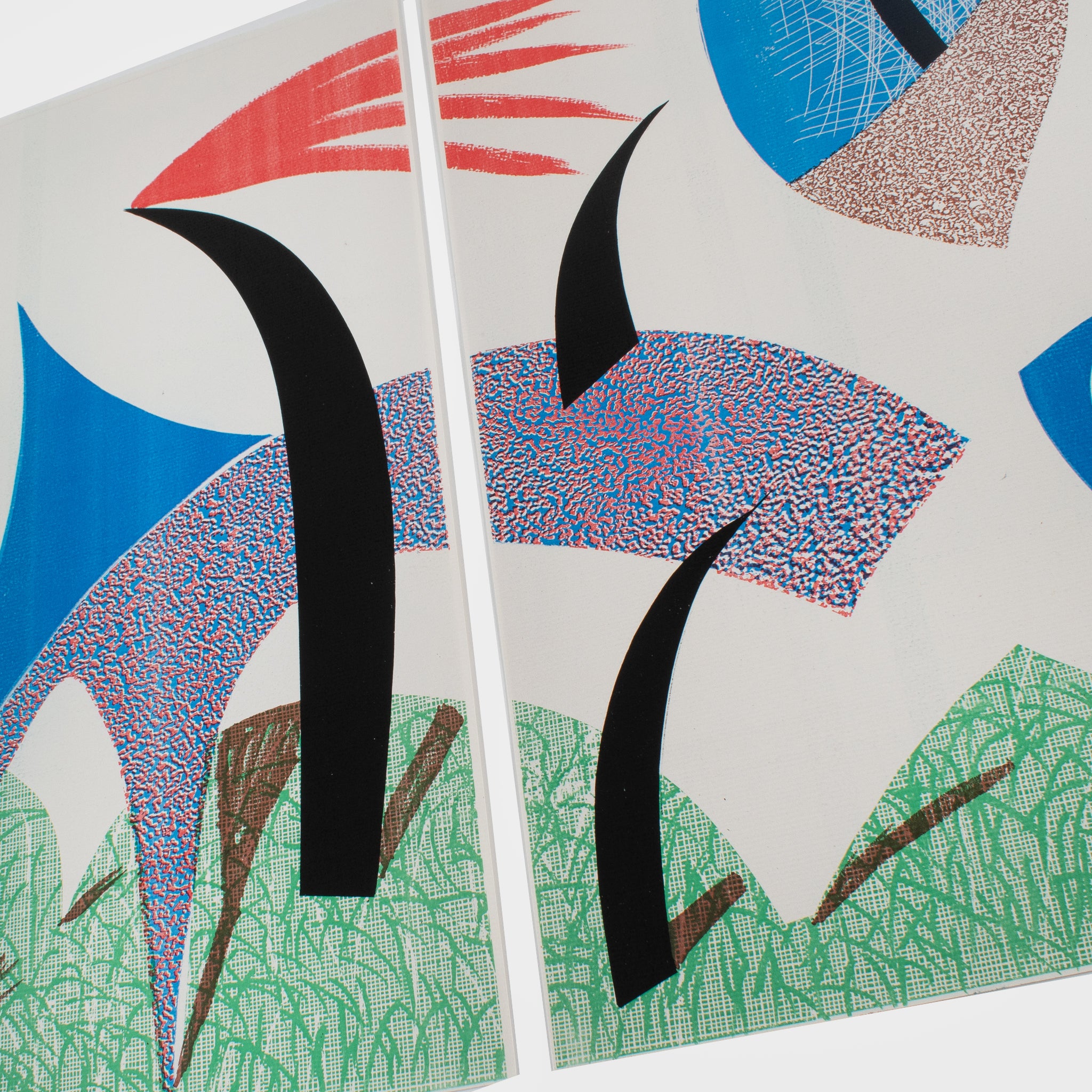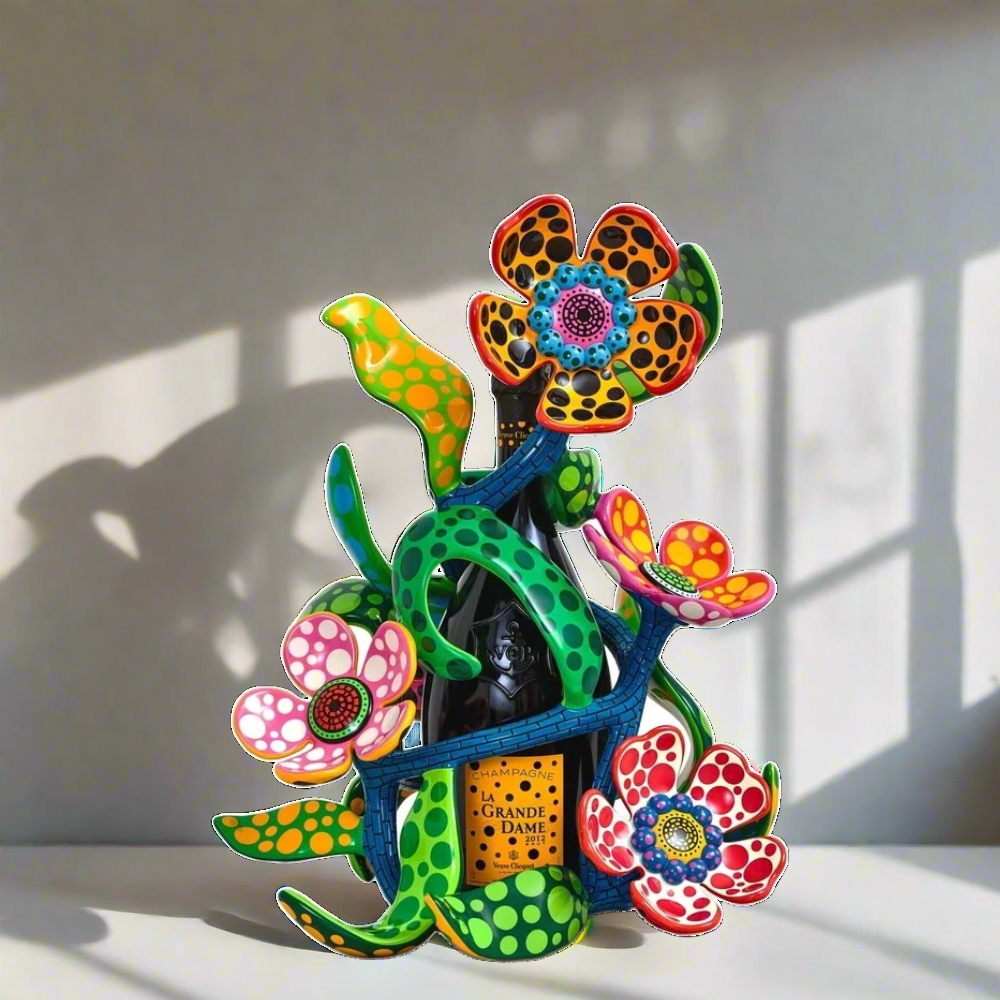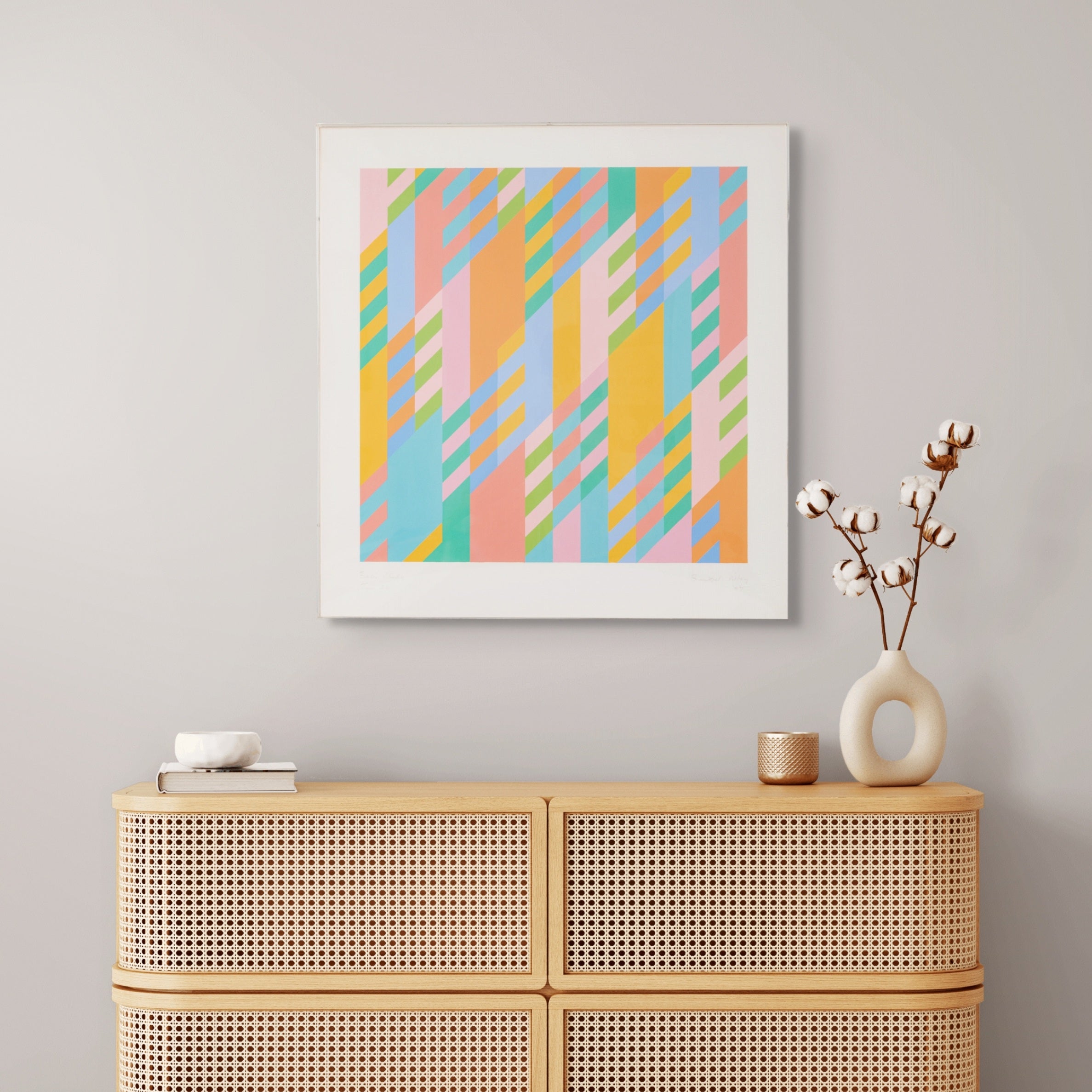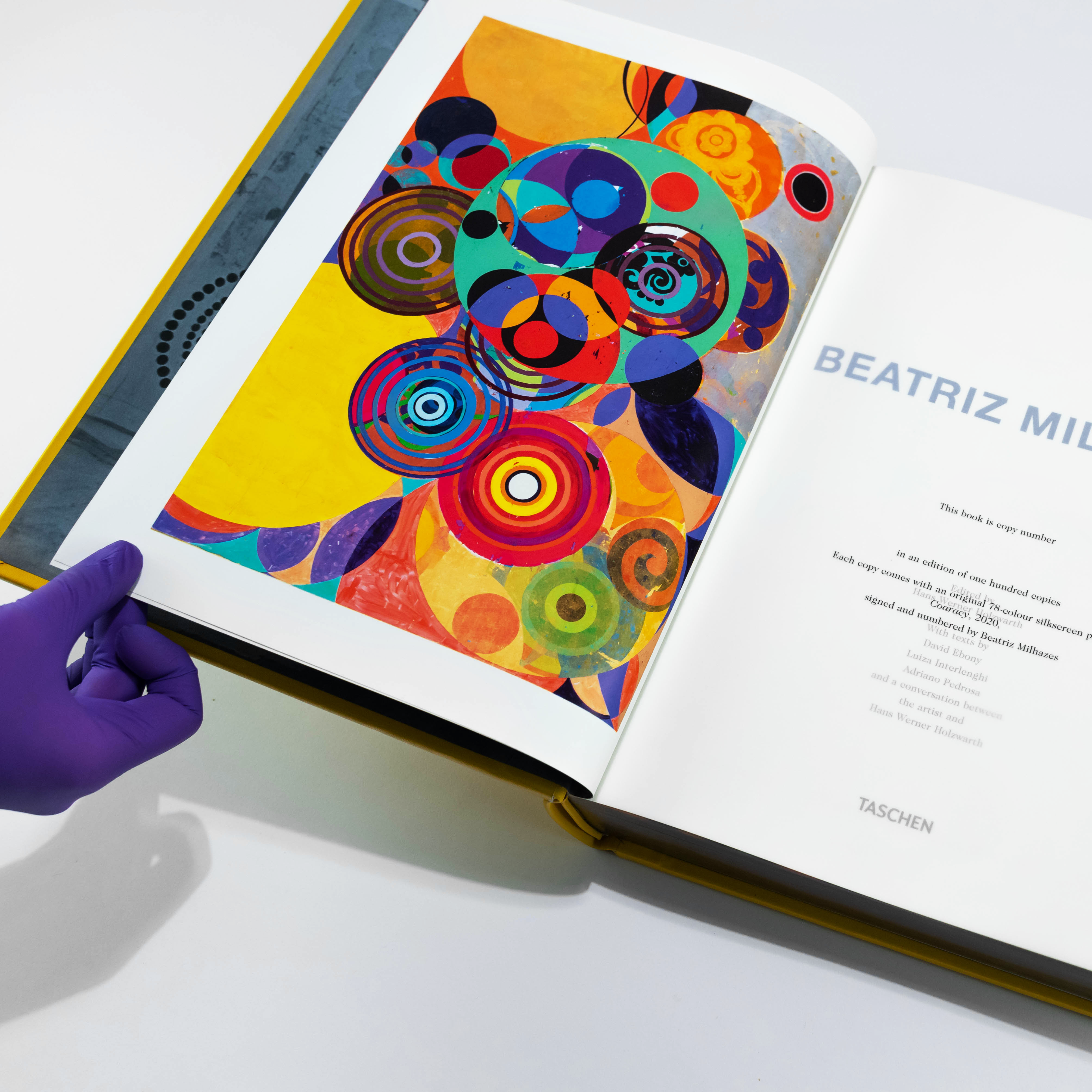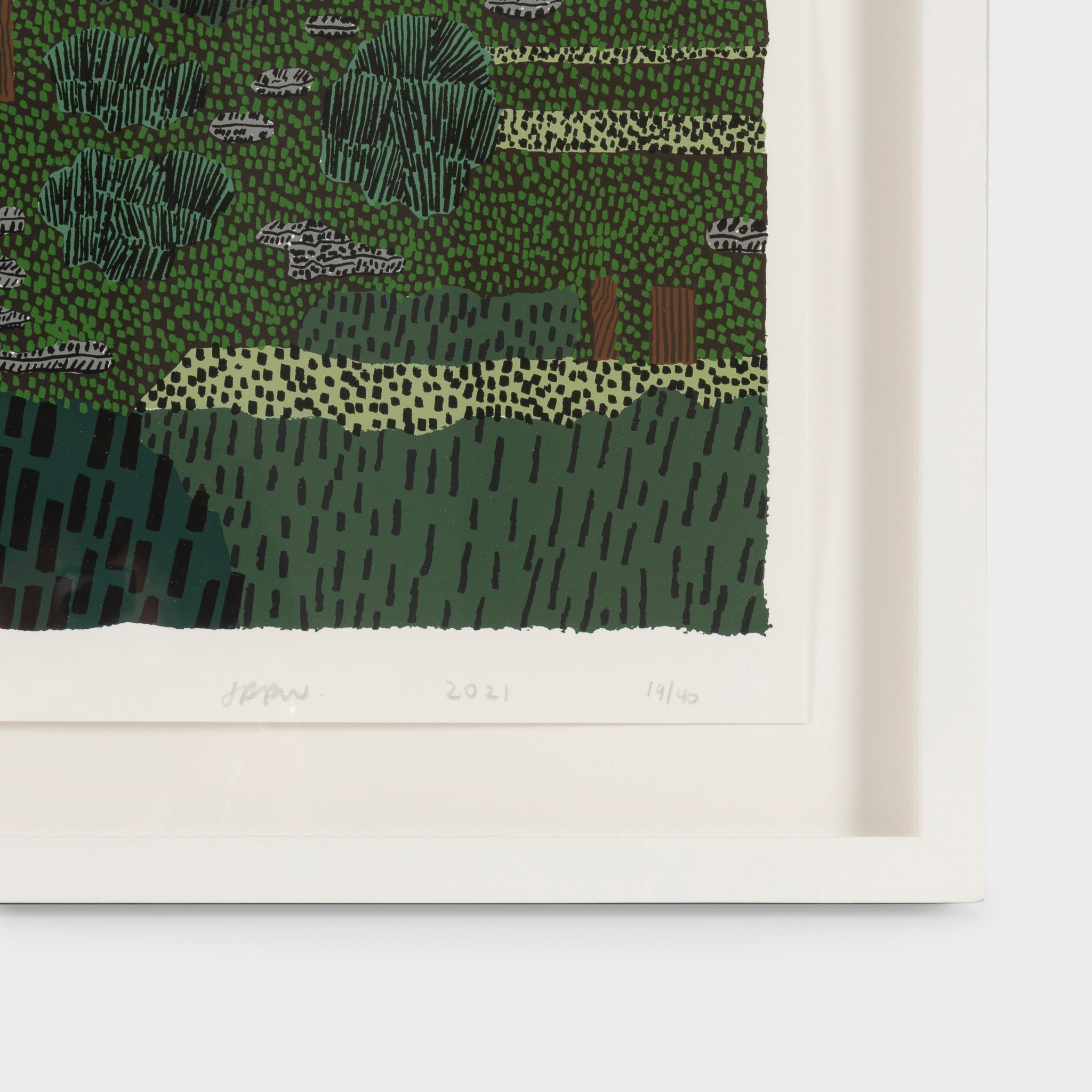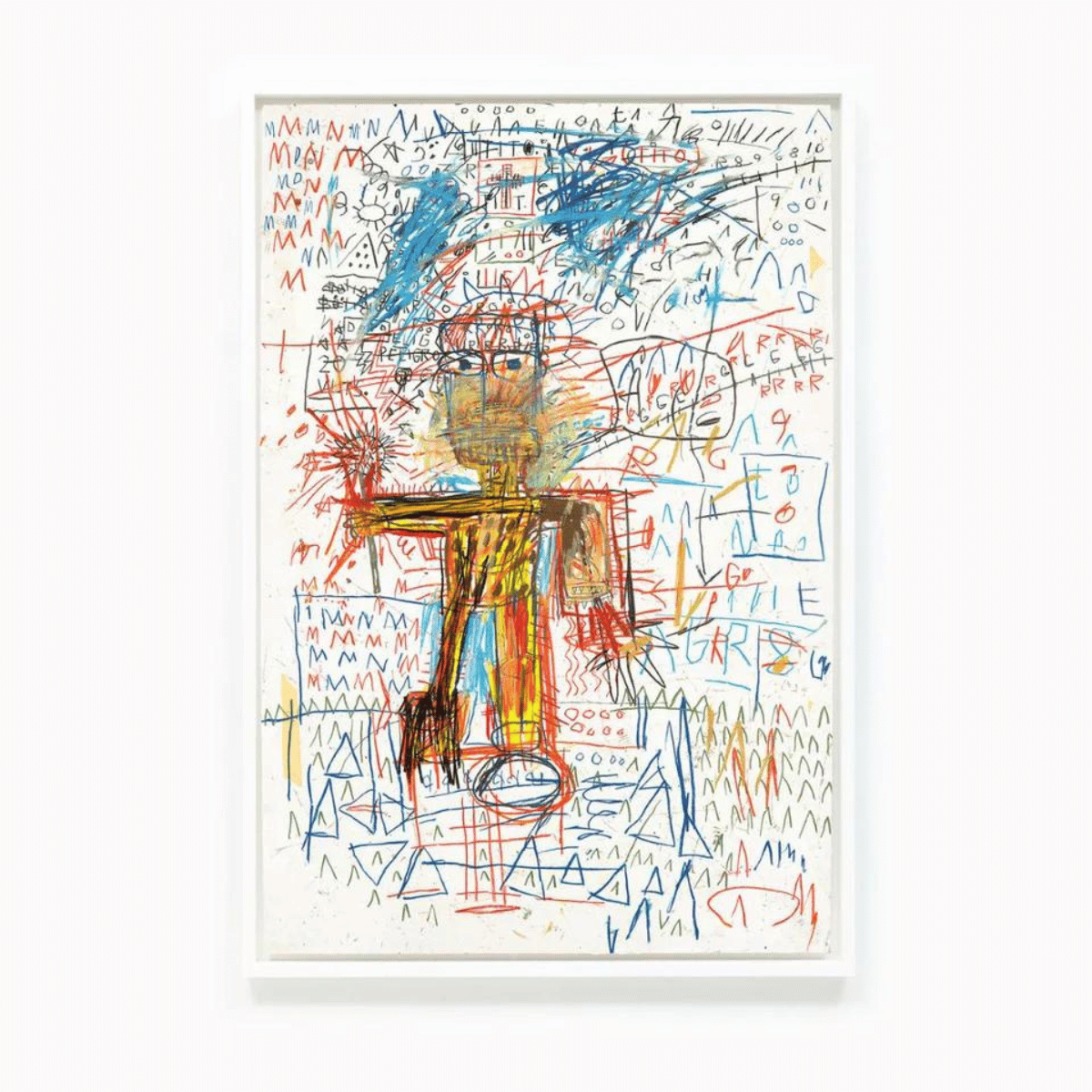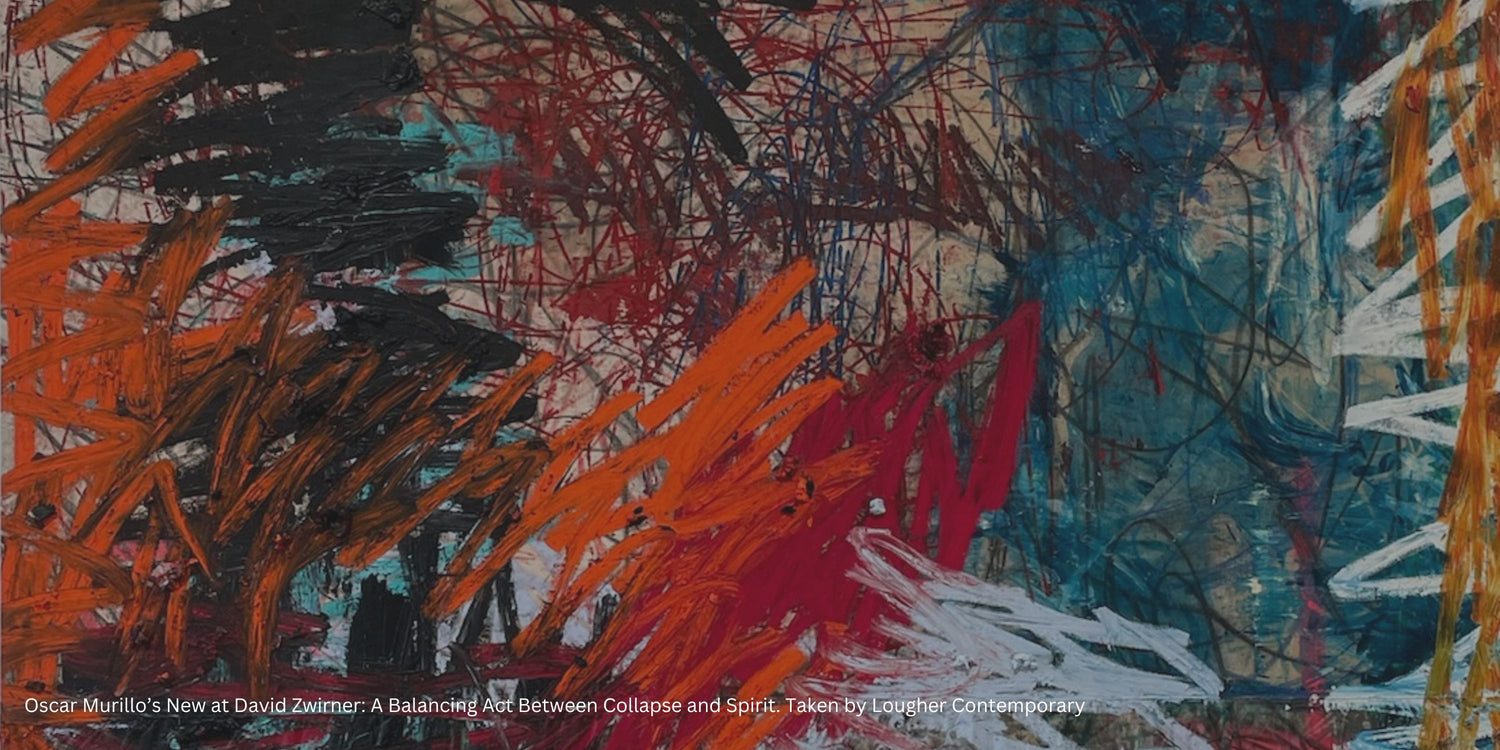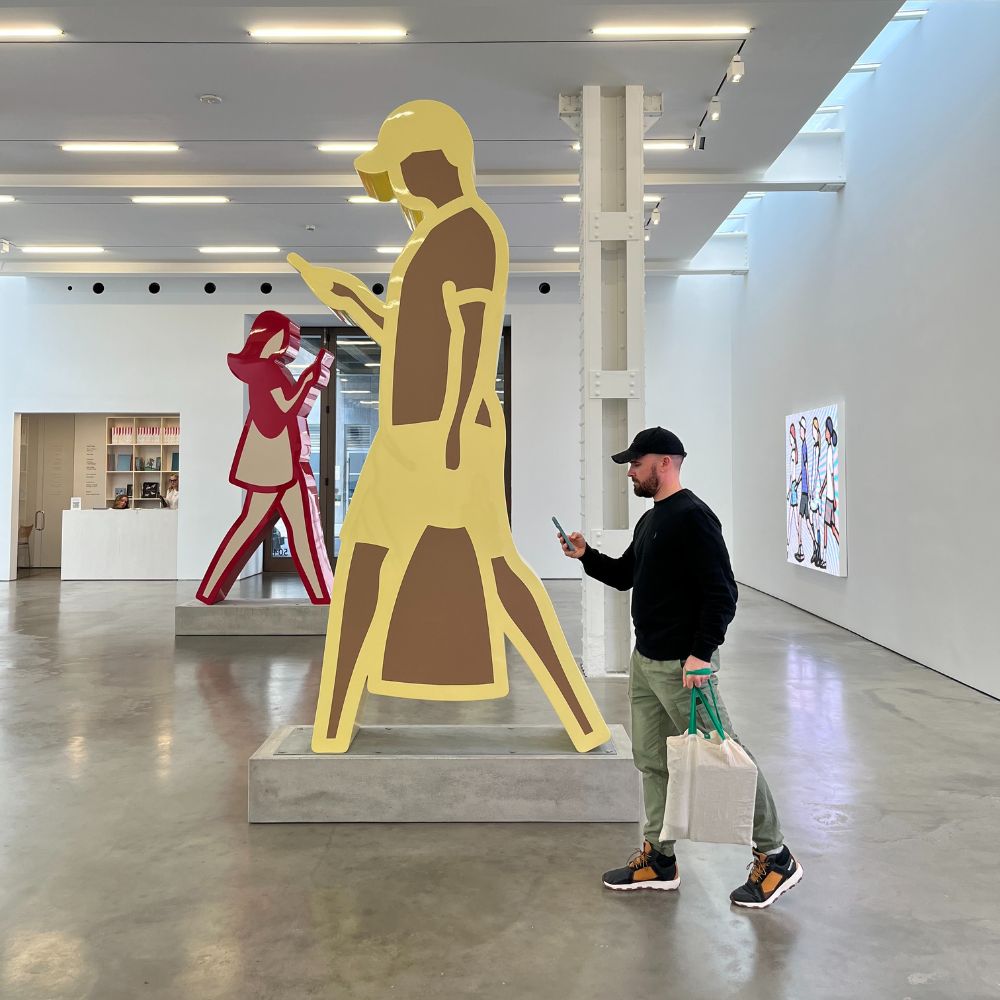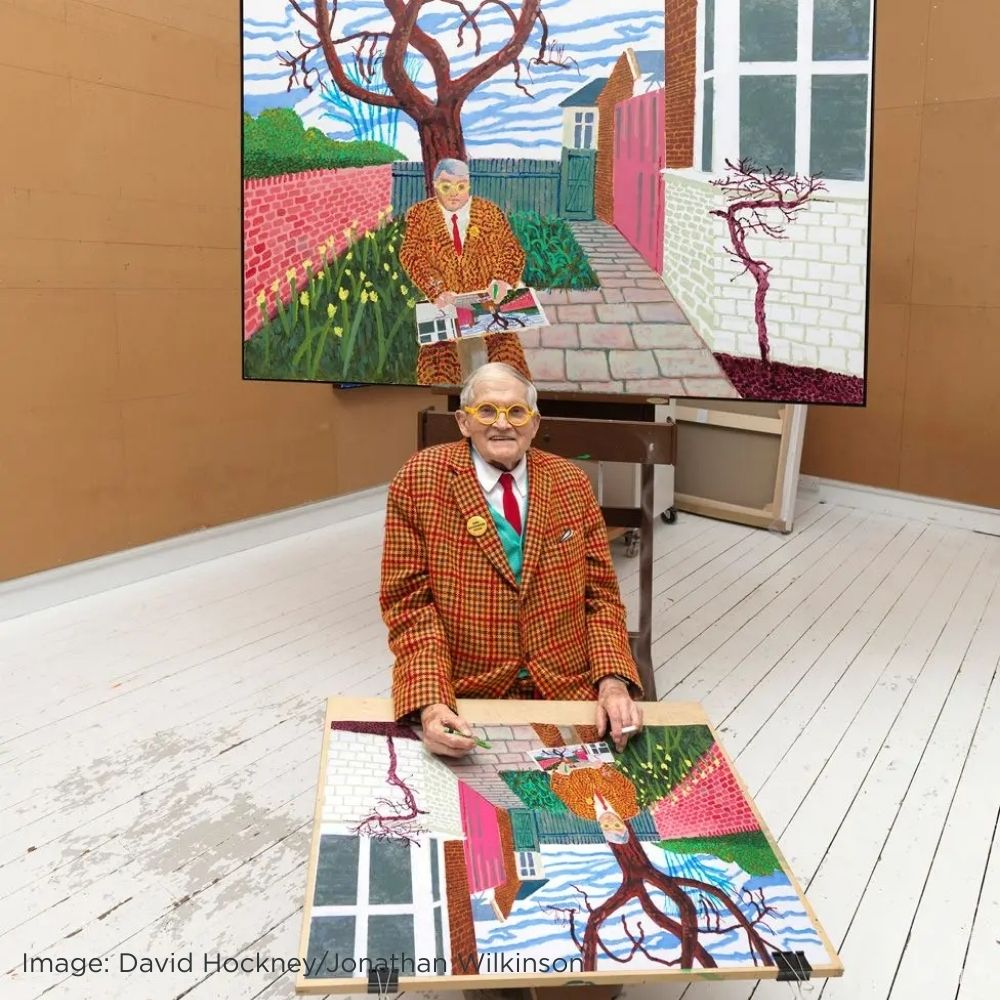Renowned Colombian-born, London-based artist Oscar Murillo’s latest exhibition, A Balancing Act Between Collapse and Spirit, has just opened at the prestigious David Zwirner gallery in London, running from 9 October to 16 November 2024. Known for his dynamic exploration of cultural exchange, migration, and social inequality, Murillo once again brings an evocative collection of works that delve into the friction between collapse and resilience—a recurring theme in his extensive body of work. The exhibition is held at the David Zwirner London space on 24 Grafton Street, placing Murillo’s pieces at the heart of the art world.

Oscar Murillo at David Zwirner: A Balancing Act Between Collapse and Spirit. Taken by Lougher Contemporary
The Exhibition
In A balancing act between collapse and spirit, Murillo examines society’s precarious balance between stability and breakdown, a tension echoed in his unique use of material and form. The collection includes large canvases constructed from repurposed materials, onto which the artist has layered oil paint, debris, and symbolic words. Each piece reveals a narrative, not just of Murillo’s personal journey from Colombia to the UK but also of broader social issues like displacement and economic inequities. His “stitched paintings,” assembled from salvaged studio remnants and painted with vivid strokes of colour, are deeply layered, both literally and figuratively.
Through these canvases, Murillo critiques globalisation and its discontents, utilising seemingly mundane elements—scraps of fabric, studio detritus, and traces of soil or dust—as metaphors for lives disrupted by migration and social injustice. Visitors can expect to see works that, though abstract, retain a deeply emotive charge, where marks, scrawls, and words such as “chorizo” or “milk” recall the artist’s cultural roots.
Turbine Hall at Tate Modern: The Flooded Garden
Earlier in 2024, Murillo presented The flooded garden at London’s Tate Modern Turbine Hall, an expansive participatory project inviting audiences to contribute to a massive, evolving artwork. Inspired by Monet’s paintings of Giverny, this immersive installation featured a giant canvas covered in wave-like strokes, painted collaboratively by participants. The work was both a community act and a reflection of nature’s beauty, with sweeping shades of deep blues and bright yellows flooding the canvas to convey vibrancy and movement.
Murillo’s practice in this piece resonates with his ongoing “Frequencies” project, where he transforms surfaces from everyday settings—like school desks—into canvases for local communities, encouraging self-expression through collective art. This participatory approach gives The flooded garden a distinctly egalitarian quality, challenging traditional roles of artist and audience by inviting the public to actively shape the artwork’s outcome. The piece also gestures toward Murillo’s broader interests: the movement of people, the transference of ideas, and the constant reshaping of identity in response to new spaces and experiences.
A Turner Prize Nominee in 2019
Murillo’s significance on the contemporary art stage was further highlighted in 2019 when he was nominated for the prestigious Turner Prize. The jury lauded his capacity to push boundaries, particularly his innovation with materials and themes that explore identity and labour. While Murillo shared the prize with three other artists—a rare occurrence that underscored the solidarity in contemporary art practice—the nomination alone cemented his reputation as a groundbreaking artist whose work captures the complexities of our interconnected world.
The Turner Prize jury noted Murillo’s ability to engage with pressing social issues. His installations often incorporate industrial materials like clay and textiles to evoke questions around consumption, labour, and survival. At the 2019 Berlin Biennale, for example, Murillo installed industrial ovens producing clay-and-corn sculptures, symbolising human sustenance. Such works resonate with his upbringing in Colombia and address disparities of postcolonial economics, reinforcing Murillo’s role as a vital voice on the intersection of art and social critique.

Oscar Murillo at David Zwirner: A Balancing Act Between Collapse and Spirit. Taken by Lougher Contemporary
The Legacy of Murillo’s Practice
Since his early exhibitions with David Zwirner, including A Mercantile Novel (2014) and Manifestation (2019), Oscar Murillo’s career has been marked by continual innovation. From transforming a gallery into a functioning chocolate factory to installing textile torsos emblazoned with workers’ slogans, Murillo has challenged traditional boundaries of genre, format, and audience interaction.
In A balancing act between collapse and spirit, Murillo confronts the turbulence of global change, inviting viewers to see themselves within his reflections on displacement, resilience, and cultural heritage. His raw materials—recycled fragments, textile remnants, industrial detritus—carry their histories, intertwining with Murillo’s own journey and the lives he honours through his work.
Oscar Murillo’s A balancing act between collapse and spirit is a powerful continuation of his exploration into what it means to exist in a world of constant transformation. At the David Zwirner gallery in London, his work presents both a personal and universal meditation on identity, migration, and the essence of resilience. This exhibition reaffirms Murillo as one of the most compelling contemporary artists today, capturing the nuances of humanity in a world at once interconnected and divided.


